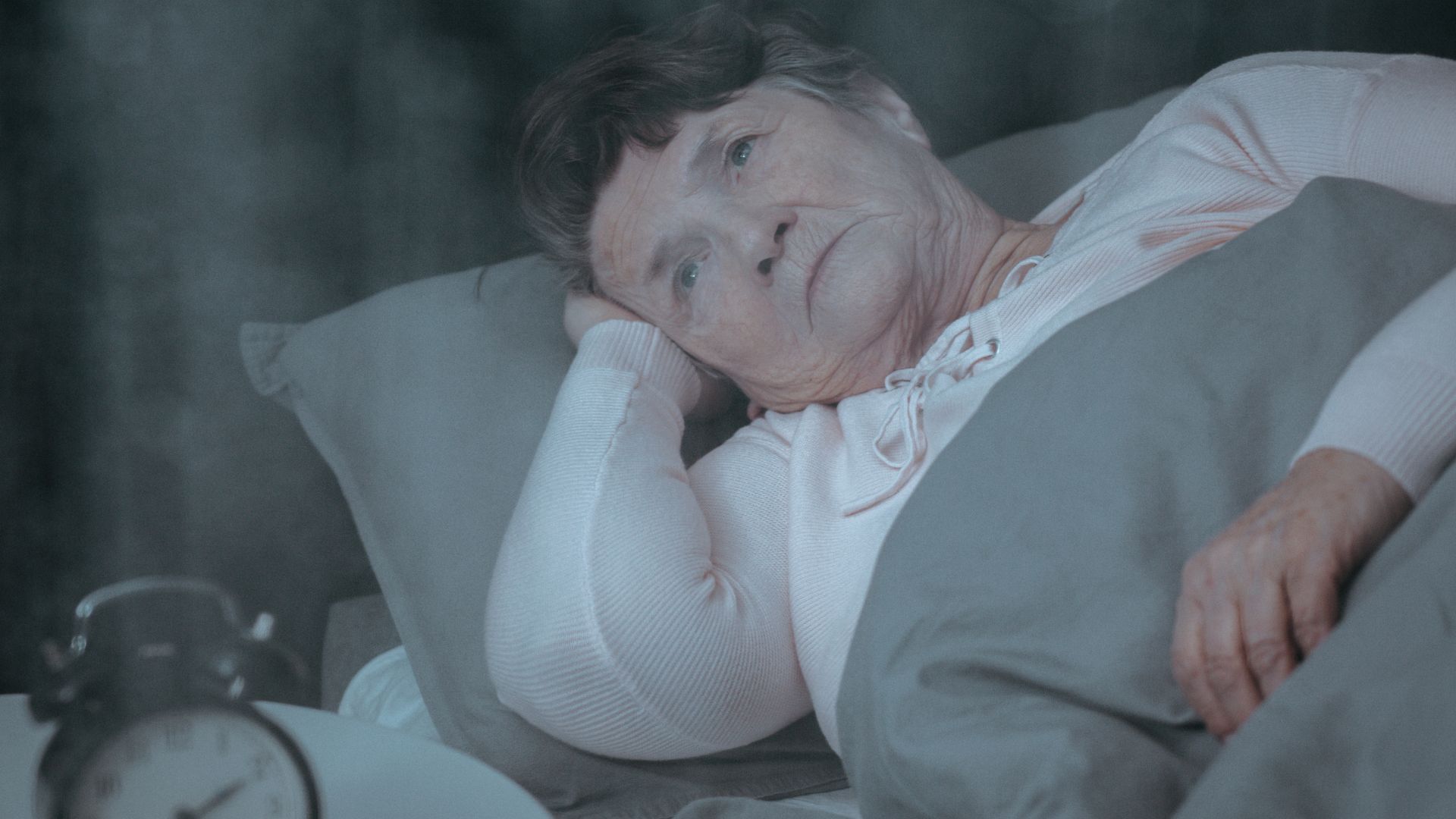
Sleep is a Right: Why Rest Must Be Protected in UK Care Homes
Sleep is not a luxury. It is as essential to health and wellbeing as food, hydration, and medication. For the more than 400,000 people living in care homes in the UK, the ability to get a good night’s rest is not just about comfort, it is a matter of health, dignity, and human rights.
Yet in too many homes, night-time care is still treated as a logistical challenge rather than a fundamental part of person-centred practice. Staff shortages, rigid routines, and outdated monitoring practices often lead to residents being woken unnecessarily, left unattended when calling for help, or forced into schedules that suit staffing patterns rather than their own body clocks.
The consequences are profound: poor sleep increases the risk of falls, infections, cognitive decline, and hospital admissions. But the issue is wider than health outcomes. Sleep is protected under UK care law and human rights frameworks, and providers who fail to respect it are not only compromising care, they are breaching residents’ rights.
Human Rights and Care Act Protections
While there is no single statute promising “eight hours of sleep,” residents’ rights to rest are safeguarded in two ways:
Human Rights Act 1998 (see footnote):
- Article 8 protects autonomy and dignity, including daily routines such as when people go to bed or rise.
- Article 3 prevents degrading treatment — which poor night care or neglect may amount to.
- Article 2 (right to life) can apply where neglect at night directly leads to avoidable deaths.
Care Act 2014: places a legal duty on local authorities to promote resident wellbeing, explicitly defined to include physical and mental health and personal dignity. Good sleep is central to all three.
CQC Fundamental Standards: Regulations require person-centred care, safe treatment, and dignity. Inspectors increasingly focus on how homes manage sleep and night care — and where they fail, ratings suffer.
The scale of the problem: The Sleep Gap
Earlier this year, Care England and Ally Cares published The Sleep Gap: The Overlooked Factor Costing Lives, Time and Trust in Care. The report found:
- Many residents in UK care homes get fewer than five hours of uninterrupted sleep per night.
- Poor sleep increases the likelihood of an incident
- Every missed hour of sleep raises the risk of falls, infections, and hospital admissions.
- The NHS spends over £2.3 billion annually on falls alone, many of which are preventable through improved rest.
The report calls on policymakers and providers to treat sleep as seriously as nutrition and medication, not as a “nice to have,” but as a foundation of safe, high-quality care.
What the CQC sees in practice
CQC inspection reports repeatedly flag poor night care as unsafe and undignified:
- A care home in the Isle of Wight, 2024: noisy corridors, call bells ringing constantly, and inadequate night staffing left residents unsafe and unable to rest.
- A care home in Kent: staff on night duty slept, setting alarms to wake up intermittently to check residents. This was judged to breach safe care regulations.
- A care home in Hayling Island: residents were woken as early as 4am to fit staff routines, undermining dignity and autonomy.
These examples show that regulators are already interpreting sleep disturbance as a breach of legal standards.
The clinical case for sleep
The science is clear: for older people, especially those with frailty or dementia, poor sleep has cascading effects:
- Falls: Lack of rest impairs balance and cognition, raising fall risk.
- Infections: Weakened immunity increases vulnerability to UTIs and chest infections.
- Cognitive decline: Fragmented sleep accelerates memory loss and agitation in dementia.
- Hospital admissions: Poor sleep is directly linked to higher hospitalisation rates.
- Quality of life: Well-rested residents are more engaged, sociable, and receptive to care.
Every hour of good-quality sleep supports not just health but dignity, mood, and quality of life.
Ally case studies: When sleep is protected
Care homes using Ally’s AI resident monitoring system have shown what is possible when sleep is respected and protected.
- Charnwood Country Residence: Better rest, brighter days
At Charnwood Country Residence, the benefits of calmer nights are visible every morning. With residents sleeping more soundly, they have more energy and engagement during the day. Manager Lindsay Hagley said:
“It’s had a massive impact on the home because the residents are more engaged not just in structured activities but in day-to-day living.”
For Lindsay and her team, the change is cultural as well as clinical: staff feel proud of delivering unhurried, person-centred care that respects residents’ rhythms.
- Kathryn’s House: Time saved, dignity protected
At Kathryn’s House, Ally has given night staff back hours each shift. By reducing unnecessary room checks, carers no longer disturb residents who are resting, freeing up time for meaningful care and better routines.
One night staff member explained:
“I worked a couple of night shifts and I had a spare hour… it’s saving about four-and-a-half hours a night, so staff can do care plans, deeper cleaning, and spend time with residents who are awake.”
It isn’t just about efficiency. Ally’s insights have helped staff spot early signs of health issues and protect colleagues. As the manager recalled:
“One lady is prone to urine infections, two nights of getting up more often, we dipped her urine and there was a UTI.”
Even safeguarding has improved.
“A resident alleged a carer hit him at 5am I asked for the recording — she wasn’t even in the room. Her name was cleared within hours.”
By aligning routines with data, staff also stopped late-night hoovering that was waking residents:
“We’ve changed our timings. Hoover later was waking people, so now we align jobs with check times — the home is cleaner and residents aren’t disturbed.”
The result? Residents sleep more peacefully, and staff spend their nights where they’re truly needed.
- Azalea Court: Reducing disturbance, improving wellbeing
For Azalea Court, the challenge was familiar: staff were losing hours each night performing checks that often woke residents unnecessarily. Ally’s technology has replaced disruption with observation, giving residents longer periods of undisturbed rest.
Julie Burton, Head of Operations at Twinglobe Care, explained:
“The original challenge around night-time care was the amount of lost time carers had by flying from room to room checking on people that were fast asleep and then disturbing them. Our prime objective was to see how we can better observe individuals to get a better sleep pattern and get a better outcome.”
Staff wellbeing has also improved, with carers now able to focus their energy on residents who genuinely need support.
- The Lawns: Reassurance for families, confidence for staff
At The Lawns, night-time data from Ally is helping staff respond quickly to changes and reassure families.
Home Manager Mel Dawson said:
“We’ve picked up on infections much quicker through changes in night-time behaviour, and families feel reassured knowing residents are sleeping more soundly without constant disturbances.”
By turning insights into action, staff can prevent problems before they escalate, protecting both health and peace of mind.
These examples demonstrate that protecting sleep delivers both measurable outcomes (fewer falls, fewer admissions, more staff time) and unmeasured benefits (better mood, more independence, greater dignity).
Technology as an enabler of rights
Traditional night checks — opening doors, shining torches, entering rooms — disturb residents’ rest even when nothing is wrong. Acoustic monitoring changes this dynamic:
- Genuine need detected: Carers respond only when residents need help — for example, if someone is in pain or attempting to get up.
- Unnecessary checks reduced: Residents who are resting are left undisturbed.
- Hidden health issues identified: Poor sleep patterns can indicate infections, pain, or discomfort.
- Evidence captured: Sleep and wellbeing data supports regulatory compliance and continuous improvement.
In short, technology makes it possible to reconcile two duties that once conflicted: keeping residents safe while also letting them rest.
Reframing sleep as a rights issue
For decades, care has focused on the visible daytime: meals, medication, activities. But half of life in a care home happens at night. Neglecting those hours means neglecting half of care.
By framing sleep as a human rights issue, we elevate it to the level it deserves:
- Just as malnutrition would be unacceptable, so should chronic sleep deprivation.
- Just as infection control is a regulated priority, so should safe and restful nights.
- Just as person-centred care respects dietary preferences, it must respect sleep routines.
This reframing shifts sleep from a “wellbeing nice-to-have” to a legal and ethical obligation.
A call to action
We are at a turning point. The Sleep Gap report has put sleep on the national agenda, backed by hard data and frontline examples. But to close the gap, change is needed:
- Commissioners must include sleep outcomes in contracts and quality measures.
- Regulators should explicitly assess how homes support rest, not just day routines.
- Providers must invest in technology and training that protect sleep without compromising safety.
- Policymakers must recognise sleep as a public health and rights-based priority, not an afterthought.
Conclusion: Sleep is a right
Sleep is not optional. For residents, it is the foundation of health, safety, and dignity. For providers, it is a test of whether care is truly person-centred. And for the system, it is a cost-saving, outcome-improving strategy hiding in plain sight.
When we start treating sleep with the seriousness it deserves, as a protected right under human rights law, the Care Act, and CQC standards, we don’t just improve care. We uphold the most basic promise of all: that people can live, and rest, with dignity.
These protections are not abstract. They have been tested in courts and highlighted in CQC inspections: from homes where residents were woken at 4am to suit routines, to cases where neglect at night left people at serious risk. The message is clear — good sleep is not just best practice, it is a right.
Footnote: Human Rights and Sleep in Care
These rights are grounded in the Human Rights Act 1998: Article 2 (Right to Life), Article 3 (Freedom from Inhuman or Degrading Treatment), and Article 8 (Right to Private and Family Life). Their application in care settings has been supported by CQC inspection findings (e.g. Ruth Lodge 2024, Whitstable House 2025, Oak View 2015) and case law such as Osman v UK (1998), Pretty v UK (2002) and Niemietz v Germany (1992).
Article 2 – Right to Life: Authorities must take reasonable steps to protect life where there is a known risk. In care, ignoring repeated night-time incidents or inadequate night staffing may breach this duty (Osman v UK, 1998; Ruth Lodge inspection, 2024).
Article 3 – Freedom from Inhuman or Degrading Treatment: Neglect that humiliates or debases — such as leaving residents in soiled pads overnight — can amount to degrading treatment (Pretty v UK, 2002; Whitstable House inspection, 2025).
Article 8 – Right to Private and Family Life: Extends to autonomy and dignity in daily routines, including when residents sleep and wake (Niemietz v Germany, 1992; Oak View inspection, 2015). CQC’s Night Care Prompts embed this principle in inspections.
